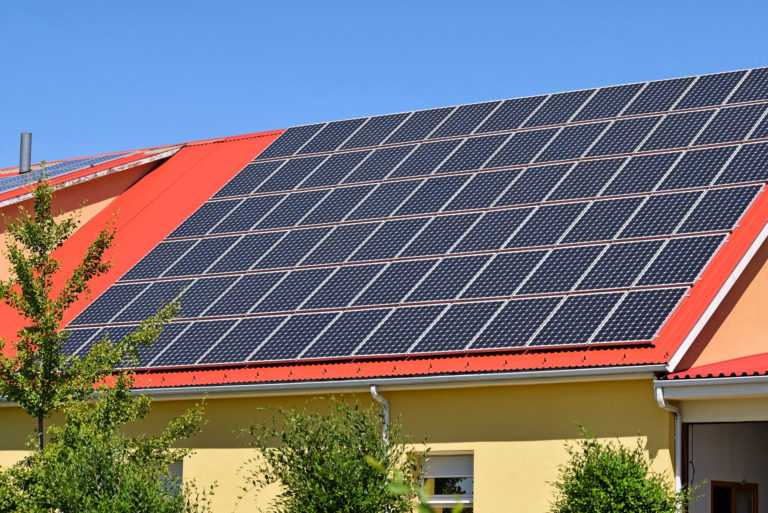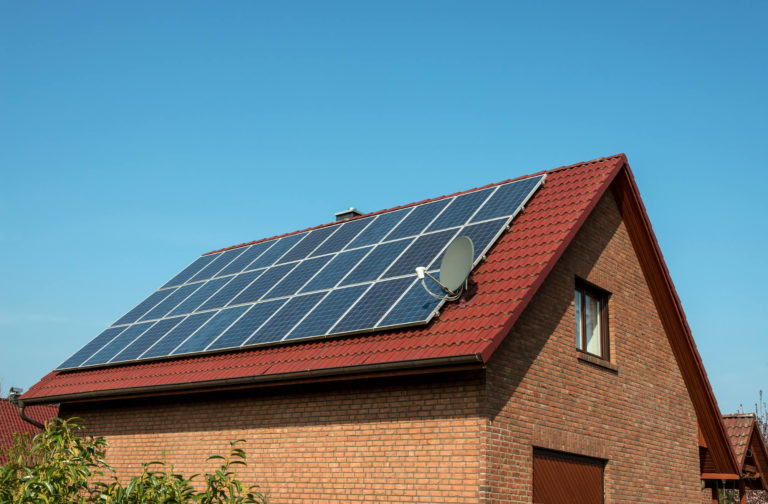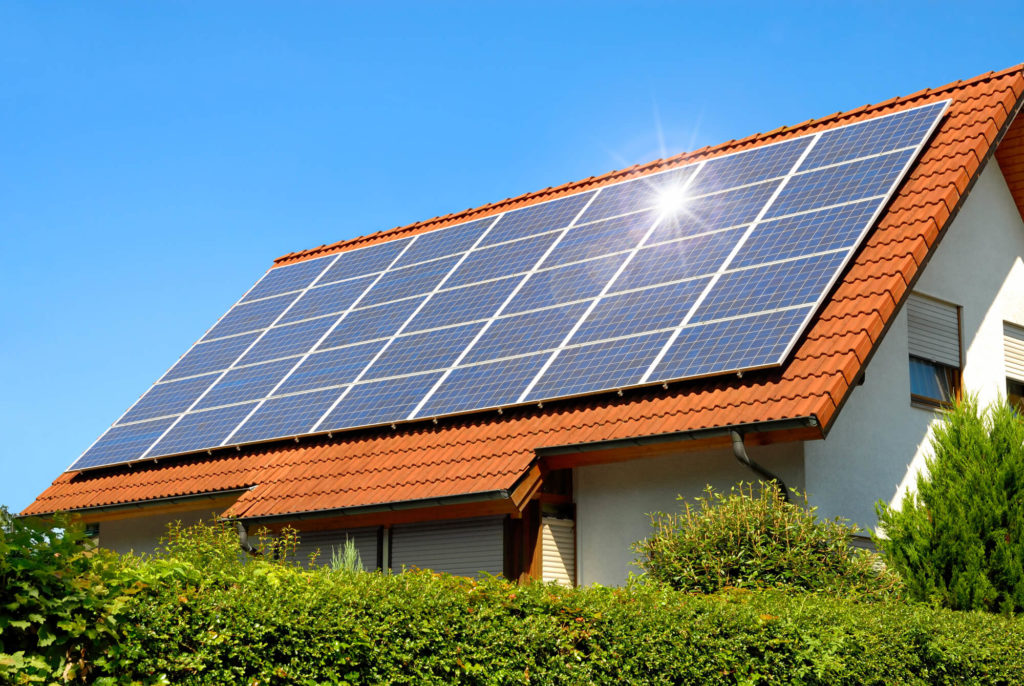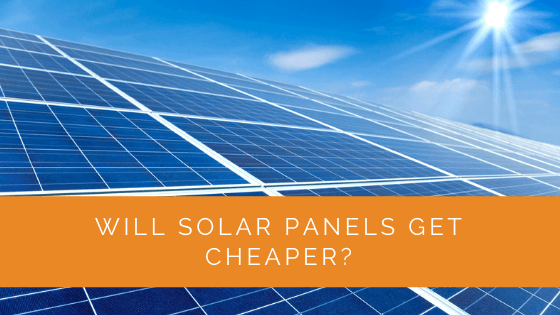Solar panels are some of the best devices that generate electricity using a renewable and clean energy source. These devices contribute to an eco-friendly world due to the smaller carbon footprint they leave behind due to their operation using solar energy compared to fossil fuels such as natural gas.
Due to their massive benefits, many people have started installing solar panels in their homes. These benefits include a more efficient flow of electricity, lower electricity bills, monetary benefits on selling excess electricity generated, etc.
However, it is not inexpensive to purchase a solar panel. Since these panels are not in high demand everywhere, they cost more.
In 2010, a solar panel would cost about fifty thousand dollars. Today, they cost about fifteen thousand dollars on average. These numbers tell us that the price has significantly dropped over the past ten years.
The main reason for this price drop is more education and knowledge among people about the advantages of buying these panels. However, the current price of panels is still high compared to using electricity from well-known local companies or a local utility company using fossil fuels.
Contents
- 1 Key Takeaways
- 2 What are the Various Costs Involved in the Installation of Solar Panels?
- 3 Why is the Cost of Solar Panels So High?
- 4 What Does the Solar Panels Cost Say About its Quality?
- 5 The Maintenance Costs Involved after the Purchase of Solar Panels
- 6 Will Installing Solar Panels Reduce Electricity Bills?
- 7 What are the Factors that Determine the Savings Obtained from Solar Systems?
- 8 Why is a Solar System Better Despite Being Expensive?
- 9 What are the Trends in the Price of Panels Over the Past Few Years?
- 10 Can People Expect to See a Fall in the Price of Solar Power?
- 11 How is the Government Encouraging the Use of Solar Power?
- 12 Experience Solar Excellence with Us!
- 13 Conclusion
Key Takeaways
- Solar panel prices have significantly decreased over the past decade, making them more affordable for consumers interested in renewable energy solutions.
- The cost of solar panels is influenced by factors such as the type of panel, installation costs, tax credits, and maintenance expenses.
- Despite the upfront expense, solar panels can lead to substantial long-term savings on electricity bills and offer environmental benefits. Still, the future price trend depends on market forces and raw material costs.
What are the Various Costs Involved in the Installation of Solar Panels?

There are many costs involved with the installation of panels. These costs include the cost of the panel, a solar installer, etc.
Purchasing your panel is only the first step. This is followed by contacting a solar installation company to hire professional solar installers.
The cost of installing a panel will depend on the location and what kind of panel you want. For example, installing a tier 1 panel will cost much more than installing a tier 2 one.
The installation cost can range from about eighteen thousand to twenty thousand dollars, almost equal to the price of the panel.
Apart from these costs, additional costs, such as solar tax credit and federal tax credit, can increase the overall price of a solar panel.
Hence, the average price of buying and installing a solar panel will be thirty thousand dollars. Due to such a high upfront cost, many residents are usually discouraged from purchasing panels.
Why is the Cost of Solar Panels So High?
Although solar panels utilize renewable energy sources such as solar energy, which is abundant and readily available, they are still comparatively expensive. The main reason for the system’s cost is the raw materials used to build these panels.
These solar hardware materials include silicon, which is expensive. Hence, hardware costs, labor costs, etc., increase the overall solar project cost.
Apart from the manufacturing costs of a solar panel system, soft costs such as warranties and installation costs also exist. If a house requires more solar panels to cover the entire home, the solar installation cost, including the soft costs, will increase accordingly.
What Does the Solar Panels Cost Say About its Quality?
In the solar industry, the cost of solar panels will vary based on several factors. But the main aspect customers are concerned with is what the solar panel prices say about its quality.
A high-quality solar panel is more expensive because its manufacturing costs are high. Hence, these panels last longer because of the enhanced efficiency of the solar cells used to make them. The high price also displays a better solar capacity for the panel.
Cheaper panels are made of cheaper materials. The solar companies selling these panels are usually new to the solar energy sector.
Due to their poor quality, these panels will be dysfunctional in the future. Hence, you will need to replace the cheaper panel quickly, increasing the cost curve for customers.
The Maintenance Costs Involved after the Purchase of Solar Panels
As market forces continue to affect a price trend in the price of solar panels over the past decade, maintenance costs will continue to be unavoidable. The primary purpose of maintenance is to ensure the proper functioning of the solar panel.
Usually, a residential solar system requires regular maintenance as these places need a continual supply of solar power. Any inconsistency in the conversion of solar power can disrupt the flow of daily activities.
The different parts of the panel, such as the solar array, need to be monitored to ensure that the energy bills are accurate. Sometimes, even solar installations, if not correctly done, can majorly affect the working of the solar systems.
Regular maintenance is required to avoid these situations and ensure optimal solar technology utilization. The maintenance cost of a solar system is estimated to be between three hundred and seven hundred dollars.
These costs include cleaning the panel as well. If you have a warranty on your panel, the cost of maintenance will most likely be covered by these warranties. Hence, you can save money in this way.
Will Installing Solar Panels Reduce Electricity Bills?
 As solar power is obtained from renewable energy sources, it greatly helps in the reduction of greenhouse gas emissions. However, another significant advantage of using solar energy is that it can help reduce costs.
As solar power is obtained from renewable energy sources, it greatly helps in the reduction of greenhouse gas emissions. However, another significant advantage of using solar energy is that it can help reduce costs.
The average electricity consumption by an American household per year is about eleven thousand kilowatts per hour. Hence, Americans spend approximately a hundred and twenty dollars per month on electricity consumption.
By installing a solar panel, people can reduce the current cost of electricity to about half of their bills before the panels are installed. The savings from residential solar systems are estimated to be nearly nine thousand dollars.
Suppose the solar installation companies install your solar panel suitably, ensuring complete solar power conversion to generate more electricity. In that case, you can expect a negative electricity bill on your utility-scale solar system.
The negative statement indicates that you have produced electricity and not used any electricity from the main grid.
Thus, you also make money by selling the extra solar energy your renewable energy system produces to the utility company. Although panels may be expensive to buy and install, their long-term benefits are undeniable.
What are the Factors that Determine the Savings Obtained from Solar Systems?
Several factors determine the monetary benefits and savings generated from using renewable energy. Not all homes have the same terrain and structure, causing differences in the amount of savings the homeowner makes.
The size of the roof and the space available for installing the panel determine the system size suitable for installation. If the roof size is smaller, it can accommodate fewer panels even if the consumption requirements are high. Hence, in such cases, the homeowner cannot expect high savings.
If the number of panels is more, the clean energy utilized will increase, increasing the energy generated. Thus, the savings will be more.
The home’s location is one of the most critical factors directly affecting the expected benefits of using an energy system.
If the home is in a place that does not receive sunlight for days, the functioning of the panel system will be adversely affected.
A few hours of sunlight is mandatory every day to ensure advantages on residential solar installation costs, at least during the beginning stages. If sunlight is unavailable, the panels will have no source for electricity generation.
Another vital addition to the price of panel systems is the installation of solar batteries. These batteries store excess energy produced to be utilized at a later time.
Many people ignore the purchase of the battery to save money, not realizing that this device is beneficial for use by customers who own panels.
A solar battery can help solve the problem of unavailability of sunlight on certain days by supplying its stored power for use by residents.
If your panel system does not include a battery, you will not be able to save excess power, causing high amounts of wastage. Hence, again, you will not be able to generate much savings.
Why is a Solar System Better Despite Being Expensive?
Due to the economy, many people have faced several financial problems. Hence, these people cannot afford to spend thousands of dollars on clean energy panels, no matter how eco-friendly they may be.
But if people look at these panels as investments, which they certainly are, it would change the whole perception of many people.
Solar technologies are expensive, but their prices are justified by the fact that they last for a long time and offer monetary benefits to customers during their period of operation.
For some houses, installing panels can be difficult due to space restrictions. However, this issue can be quickly sorted out due to the different degrees and types of panels available today.
Many manufacturing companies are conducting tests to produce better-quality panels with wide applications.
Hence, if you have the funds required to purchase, install, and maintain panel systems from well-known certified manufacturers, installing panels is worth it. You can eliminate a larger portion of your carbon footprint by installing these panels.
What are the Trends in the Price of Panels Over the Past Few Years?
In recent years, a relatively small percentage of American households have adopted solar power for their energy needs. Over time, the cost of solar panels has significantly decreased compared to prices from several years ago. This notable price reduction can be attributed to increased investment in the solar industry’s business model.
Given that the solar power sector is still in its early stages within the energy market, there is a potential for further price reductions as solar panels become more mainstream and widely adopted.
 In the early two-thousands, little was known about the advantages of using renewable energy for electricity generation. As more knowledge was spread and more people started buying panels, the demand increased, reducing prices.
In the early two-thousands, little was known about the advantages of using renewable energy for electricity generation. As more knowledge was spread and more people started buying panels, the demand increased, reducing prices.
In 2010, the price for a solar photovoltaic system to produce a megawatt of electricity in an hour was about four hundred dollars. But nearly ten years later, the same electricity generation now costs only about seventy dollars.
Hence, the price of panels is lower than non-renewable energy sources, such as coal. Due to rapid depletion rates, the cost of energy generation from coal and other unrenewable energy sources has increased.
However, a recent report highlighted a shift in the cost of panels, with prices rising after a period of consistent decreases over the past few years. This increase in panel prices can primarily be attributed to higher costs associated with the primary raw material, polysilicon.
Can People Expect to See a Fall in the Price of Solar Power?
The Bloomberg New Energy Finance declared in its BNEF new energy outlook that solar energy, besides other forms of sustainable energy, will occupy close to fifteen percent of the leading energy system by 2030.
However, BloombergNEF reduced the estimated price of panels for many reasons, the most important being the rise in polysilicon costs.
Hence, many large-scale panel manufacturing projects could be delayed due to higher costs of raw materials. This delay could reduce the demand for panels, once again increasing their price in the market.
Thus, apart from demand in the market, unforeseen circumstances, such as the availability of starter materials, also determine the cost of panels. So, it cannot be said clearly whether the price of solar panels will become lower. It depends solely on uncontrollable economic factors.
How is the Government Encouraging the Use of Solar Power?
The Investment Tax Credit (ITC) for solar power, as part of the Inflation Reduction Act signed into law in 2022, has seen significant updates. The ITC now offers a 30% tax credit for solar photovoltaic (PV) systems installed between 2022 and 2032. This is an increase from the previously planned decrease in the tax credit rate. The intention is to further encourage the adoption of solar energy by making it more financially accessible.
From 2033 onwards, the tax credit rate will decrease, decreasing to 26% in 2033 and further reducing to 22% in 2034. It’s important to note that the tax credit is a one-time claim that reduces tax liability rather than a refund. If the tax owed in the year of installation is less than the credit value, the remaining credit can be carried over to the next tax year. The ITC covers various costs associated with solar power installations, including equipment that generates electricity or heats water, qualifying installation and labor costs, and sales taxes on eligible expenses
Many local incentives are also offered to customers who buy and own panels. One of the most common forms of these incentives is solar power rebates. These rebates are incentives given in the form of cash to individuals who own panels.
They are granted from government incentive programs and are directly subtracted from initial costs. The NY-Sun program is a perfect example of these local incentive programs in New York.
Experience Solar Excellence with Us!
Trust in Solar Panels Network USA, where our seasoned experts deliver top-quality solar solutions for homes and businesses nationwide. With a legacy of countless successful installations and a commitment to sustainable energy, we’re your reliable partner in the solar journey. Ready for a brighter, eco-friendly future? Call us now at (855) 427-0058 and harness the sun’s power!
Conclusion
As solar data is subject to changes every year, many forces directly affect its price ranges. While people can see a drop in the prices of panels in the future, this estimation can be made based on currently available resources and data.
If there are no adverse market changes, this estimation will stand firm. However, in the case of unexpected situations, such as unavailability of starter materials, increase in import-export costs, etc., exact price estimations will vary.
About the Author
Solar Panels Network USA stands at the forefront of solar energy solutions, driven by a team of seasoned solar engineers and energy consultants. With over decades of experience in delivering high-quality solar installations and maintenance, we are committed to promoting sustainable energy through customer-centric, tailored solutions. Our articles reflect this commitment, crafted collaboratively by experts to provide accurate, up-to-date insights into solar technology, ensuring our readers are well-informed and empowered in their solar energy decisions.

